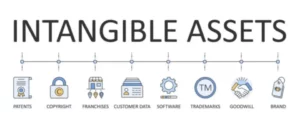Content

Profit-maximizing manufacturing companies use the AVC to help them decide at which time they should end the production for a specific good. If the price they receive for the product is higher than the AVC, it is one indicator of a profitable product. Marginal cost refers to how much it costs to produce one additional unit.
Whether a firm makes sales or not, it must pay its fixed costs, as these costs are independent of output. Therefore, a company can use average variable costing to analyze the most efficient point of manufacturing by calculating when to shut down production in the short-term. A company may also use this information to shut down a plan if it determines its AVC is higher than its. Salaries are generally considered a fixed cost because they typically remain the same each pay period regardless of the level of production or sales. A salaried employee receives the same amount whether the company’s output rises or falls. This formula implies that variable costs are determined by the quantity of output and the variable cost of producing each unit.
What is the Total Variable Cost Formula?
Beauty is looking for help because it wants to better understand its cost structure. You have the following voice notes from your interview with Milky Dairy, the owner of the shop. Take your learning and productivity to the next level with our Premium Templates. In effect, a company with low operating leverage can be at an advantage during economic downturns or periods of underperformance. Nurture and grow your business with customer relationship management software. Businesses that receive credit card payments from their customers will incur higher transaction fees as they deliver more services.

Commissions are often a percentage of a sales proceeds that is awarded to a company as additional compensation. Because commissions rise and fall in line with whatever underlying qualification the salesperson must hit, the expense varies (i.e. is variable) with different activity levels. You might pay to package and ship your product by the unit, and therefore more or fewer shipped units will cause these costs to vary. The cost of materials for each pen is $1, and the labor cost per pen is $2. As you can see from the scatter graph, there is really not a linear relationship between how many flight hours are flown and the costs of snow removal. This makes sense as snow removal costs are linked to the amount of snow and the number of flights taking off and landing but not to how many hours the planes fly.
Assume a constant rate
In short, fixed costs are more risky, generate a greater degree of leverage, and leaves the company with greater upside potential. On the other hand, variable costs are safer, generate less leverage, and leave the company with smaller upside potential. In general, companies with a high proportion of variable costs relative to fixed costs are considered to be less volatile, as their profits are more dependent on the success of their sales. Fixed costs are expenses that remain the same regardless of production output.
- In fact, you can design your business, your products, and your marketing in a way that everything grows together to minimize costs.
- So when the salesperson makes 2 sales, they get paid for those, whilst if they make 10 sales, they earn even more.
- If you earn commission or performance-related bonuses, or you work on a flexible basis and you charge an hourly rate or a day charge, this is different.
- Remember that the reason that businesses take the time and effort to classify costs as either fixed or variable is to be able to control costs.
- These costs are entirely dependent on the organization’s volume of production and will vary based on the amount a company is able to produce.
- For companies looking to reduce the degree of operating leverage, it is essential to consider the role of fixed cost.
- And, because each unit requires a certain amount of resources, a higher number of units will raise the variable costs needed to produce them.
Therefore, Amy would actually lose more money ($1,700 per month) if she were to discontinue the business altogether. Since a company’s total costs (TC) equals the sum of its variable (VC) and fixed costs (FC), the simplest formula for calculating a company’s VCs is as follows. The variable cost ratio allows businesses to pinpoint the relationship between variable costs and net sales. Calculating this ratio helps them account for both the increasing revenue as well as increasing production costs, so that the company can continue to grow at a steady pace.
Examples of Variable Cost
When they classify costs properly, managers can use cost data to make decisions and plan for the future of the business. Both the companies have the same sales and variable cost, but the fixed cost is different. Financial costs like interest expense may also be considered a fixed cost because it is not dependent on the production level. The higher the percentage of fixed costs, the higher the bar for minimum revenue before the company can meet its break-even point.
Why do we calculate variable cost?
By performing variable cost analysis, a company can easily identify how scaling or decreasing output can impact profit calculations. Variable costs impact a company's expense structure.
Fixed costs are exactly as the name implies – they remain the same regardless of the quantity / volume of goods or services produced within the period. Mixed costs are those a combination of variable and fixed components (and when conducting CVP analysis, we will break mixed costs into fixed and variable components). Some of the most common https://www.bookstime.com/articles/variable-cost variable costs include physical materials, production equipment, sales commissions, staff wages, credit card fees, online payment partners, and packaging/shipping costs. If your variable costs are $20 on a $200 item and your fixed costs account for $100, your total costs now account for 60% of the item’s sale value, leaving you with 40%.
For example, if the spark plug business spends $100,000 per year in rent, rent costs are allocated to each unit at $0.20 per unit. If we are able to increase production by three times, rent is now allocated at only $0.07 per unit, creating more profit margin on each spark plug. Since fixed costs are more challenging to bring down (for example, reducing rent may entail the company moving to a cheaper location), most businesses seek to reduce their variable costs.